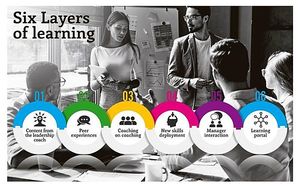By Kim Ambor, Fastlead Coach
I’ve run several Fastlead pods over the years via virtual mediums due to people being geographically dispersed. Here are some tips about what I’ve learned. It is by no means exhaustive, just my experience. I’ve divided it into 3 sections: technology, content, delivery.
Technology
-
Technology sometimes fails, so I advise everyone to dial in early, and have a back-up phone plan. It helps to have everyone’s mobile numbers so you can call them if you can’t get online. Ask the Fastlead project manager)to put these details in the calendar invites if possible.
-
Have a decent camera and make sure it is facing everyone front on.
-
Ensure your microphone is clear and audible.
-
All participants, including the coach, should be in a quiet space, with minimal distractions where everyone is unlikely to be interrupted.
-
Keep a neutral background (like a wall) and if working from home, reduce the amount of possible external noise (e.g. kids and washing machines). You could also use a virtual background.
-
I advise coaches to use emails for a follow up, e.g. sending video links or extra readings. It helps to embed the learning. Participants should make the effort to use these tools - it’s worth it!
-
Connect up with all participants, if possible, on LinkedIn in advance. This enables everyone to see each others’ profile, and gain a better understanding of their history and background. Some participants aren’t on Linked In, so in these instances we ask them to describe their backgrounds at the Faststart meeting.
-
I suggest that participants form a WhatsApp / virtual group so that they can liaise offline as well, in between sessions and network with their pod buddies.
Content
-
It goes without saying that all participants should be well prepared for a virtual session. Have some back-ups or alternatives in place in case something doesn’t work the way you thought it would. Make sure everyone has their workbooks or access to a workbook (e.g. via FastLead website), and a pen.
-
Have large pieces of paper handy with bold marker pens, so if you have to draw a diagram to explain, you can hold it up to the camera. Ideally if there are models / diagrams, either refer to their workbooks, or send it to them before the session.
-
Some topics are more challenging to do virtually – e.g. coaching and developing others, and my leadership brand. Find other ways to run the practicals using your experience.
-
Before you start, make sure the group agree the ground rules. Sometimes people add in things like: not checking their computers whilst other people are talking, or switching off email alerts so they’re not distracted.
Delivery
-
It can take a bit longer to develop trust and rapport with the group when it is run virtually. Sharing something personal about everyone (first) helps break the ice. Reinforce the “circle of trust and confidentiality.” If participants don’t feel the trust, they are unlikely to open up and share with the group, which can make the conversations a bit “light” at times.
-
Explain to participants that being virtual requires them to really listen (particularly if this is a phone pod, rather than video-conference). It really is an added skillset to really listen and be 100% focused as there are often other distractions that can happen.
-
Use gallery view on VC, because this means everyone is in proper view all the time. For the pod to work well, it’s important everyone is aware of people’s hand and face cues as they’re more difficult to see on camera than live in a face-to-face situation. Listen for changes in voice, e.g. if they’re anyone is feeling frustrated or overly excitable.
-
Depending on the clarity of the “airwaves”, participants may have to speak more articulately or slow down a bit.
-
Make sure everyone’s phone/ smart watch is on silent so nothing pings whilst you’re in the session.
-
Keep an eye on the time. Find your rhythm and pace. Be flexible as some modules are longer than others. Just try not to go over time as two hours is a long time for people to concentrate and be seated.
-
If you are only using the phone, everyone needs to learn to recognise different participants’ voices so they don’t have to keep saying their names before they speak.
-
Virtually, everyone needs an extra few seconds to think about / process questions. In order for people not to “trip over” each other or interrupt, it’s a good idea for the coach to say something like: first we will hear from John, then Susie then Terry etc. It sets participants up for the talking points. Mix up the order of speaking for the next round.
-
Encourage the group to challenge each other so it doesn’t become a coach to participant conversation only. Fastlead is about wanting to catalyse group conversations.
And for a little light humour on what it can be like to run a virtual conference call, watch this from Tripp and Tyler
Fastlead is available for delivery either via phone or video-conference. All resources are available on our learning portal, that all participants have access too. Kim Ambor is one of more than 25 accredited Fastlead coaches across Australia and New Zealand.
If you liked this article, and you are a coach, you’ll really like Fastlead’s Eight Principles of Small Group Coaching.




